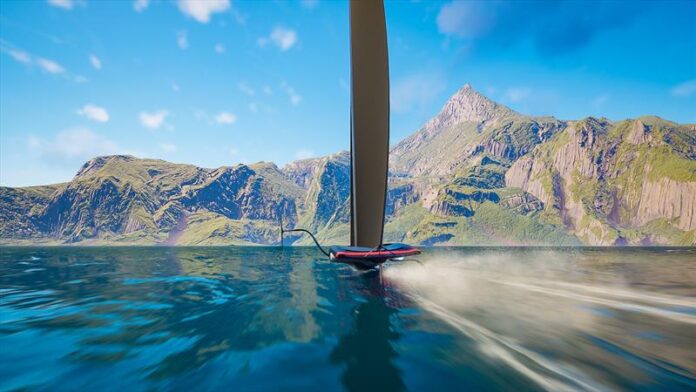The first AC40 is expected to leave the McConaghy Boats build facility in China in a few weeks and will be shipped to the first owner, America’s Cup Defender, Emirates Team New Zealand.
Sail-World’s guess is that it will be sailing in late September/early October. The earliest date permitted in the Protocol for established teams (those who did not sail in the 2021 America’s Cup) to sail an AC40 or first generation AC75 is September 17, 2022.
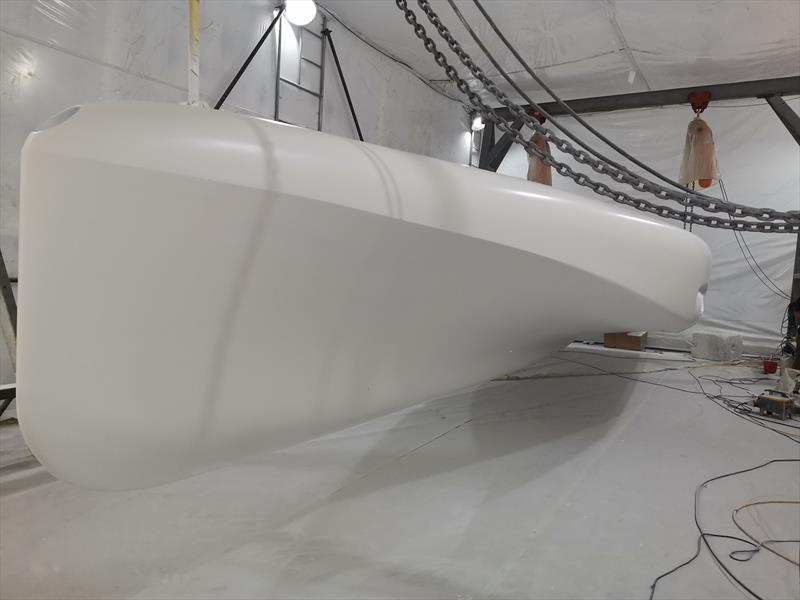
The second AC40 will be delivered to the team of the Challenger of Record, INEOS Britannia, and others will follow or each of the Challengers in order of entry. Most if not all of the five teams entered so far in the 2024 America’s Cup will have two of the AC40’s which carry only four crew.
The AC40’s will also be sailed by the teams contesting the Womens and Youth America’s Cup, with each team competing in AC2024 being required to make one entry in each event.
Private entries into some AC40 events will also be accepted. The price of the AC40 without sails or rigging is set at $US1.85million in the AC2024 Protocol.
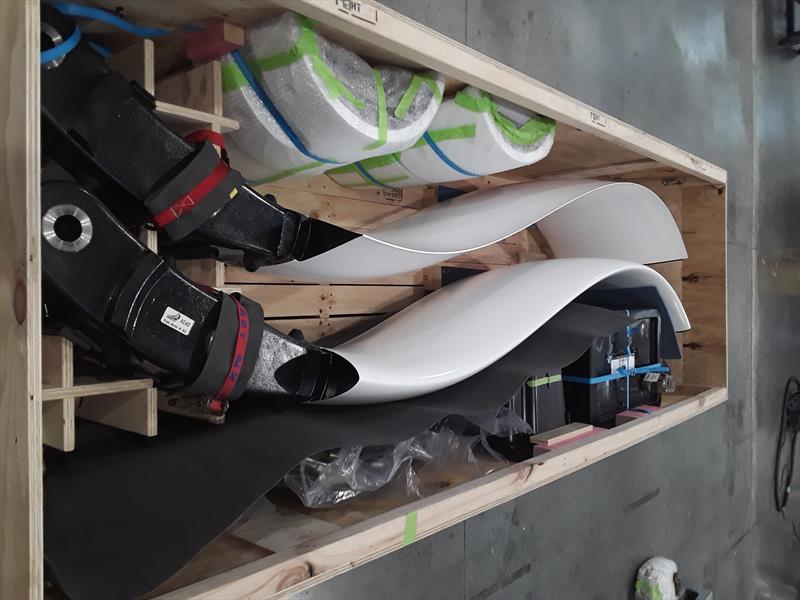
“We didn’t hold back on the design,” was how Dan Bernasconi, Chief Designer of Emirates Team New Zealand put it, “we took the IP of Te Rehutai (the Cup winning boat from AC36) and translated it into the best 40-footer we could create.”
Very much off the boards of the Emirates Team New Zealand Technology & Design Department, the build of the yachts has been overseen by long-standing ETNZ team-member Richard Meacham whilst actually at the McConaghy factory in China, Kiwi Jamie Thompson has been the Project Manager running a dedicated team of builders and craftsmen working shifts around the clock to create this next-generation vessel.
“It’s a step on in terms of hull form from the Cup winning design of Te Rehutai,” commented Richard Meacham, “that adheres to all the fundamental rule changes implemented for the AC75’s and we’re looking at performance estimates in excess of our training boat, Te Kahu, or any of the other teams’ test boats that they ran in the lead up to AC36.”
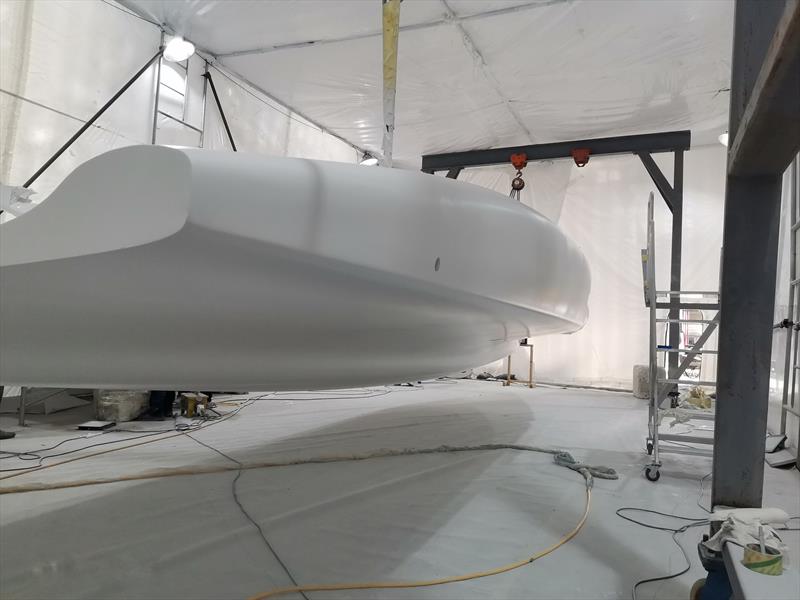
Building the hulls away from New Zealand was always going to be controversial to some but Richard Meacham is clearly impressed with the work overseen by Mark Evans and project managed by fellow kiwi Jamie Thompson at McConaghy’s: “We assessed the situation early on in the project, but it was clear that that with the scale and timeframe of the overall build of the fleet of AC40’s there was a shortage of boat-building labour for the hull builds in New Zealand, so we had to look overseas. McConaghy’s have been fantastic and very hard driving, but the key has been the Kiwi design and technology influence all the way through the process.”
Indeed, the hull, foil arms, rudders, mechatronics, hydraulics, and programmable logic controllers have all come directly from ETNZ’s design teams with the foil arms and rudders being created at ETNZ’s build facility on Auckland’s North Shore.
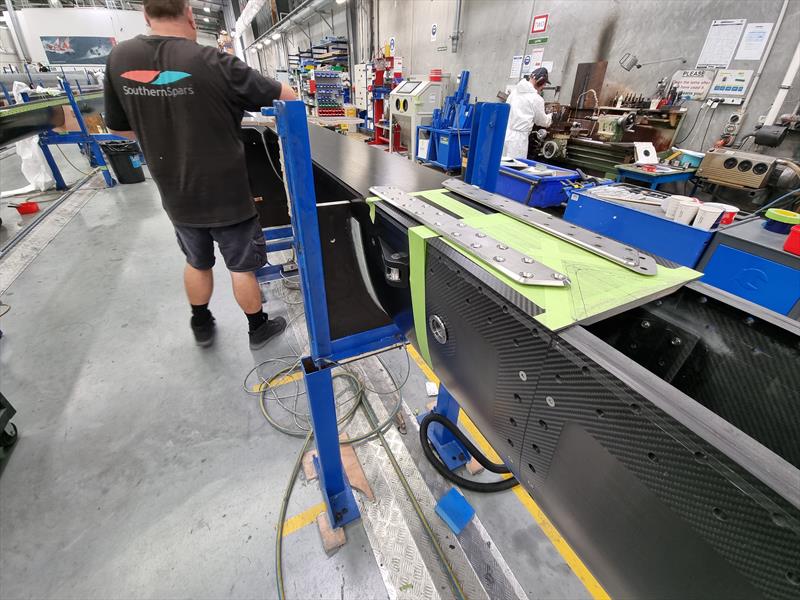
The boomless, double-skinned sails have been designed in collaboration with North Sails whilst the two-piece masts have been crafted by Southern Spars in Avondale, Auckland.
However, there are strict parameters and cost reduction measures with stipulations including: a maximum of four custom foil wings and four custom flaps.
Ten custom jibs and four mainsails are permitted to be built. Teams will also be allowed to build just one custom mast in addition to the two-piece supplied as standard.
Down below, the auto-pilot controls the ride height only and can be manipulated, holding the wing at a certain set point below the water. If the teams want to change the pitch angle or trim differently for conditions, then there needs to be manual intervention whilst all foil cant operations during the high-speed manoeuvres are controlled by direct input from the crew.
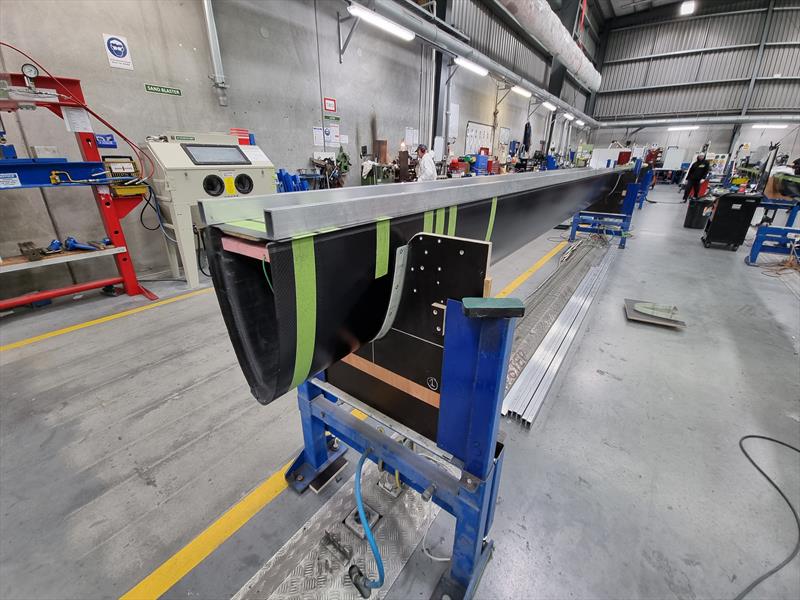
“One of the guiding principles of both the AC40 and AC75 projects is that they must be sailed, trimmed and set by the crew. Top speeds of the AC40’s will be well into the forty-knot mark plus they will be optimised to fly faster and sooner in light airs – the same as with the AC75s.” explains Dan Bernasconi, Chief Designer of Emirates Team New Zealand
One of the big considerations for the AC40 global circuit will be the ease of transportation. Each one will be transported on a custom flat rack which can carry the whole boat and all appendages to save on shipping costs and increase transportation efficiencies.



